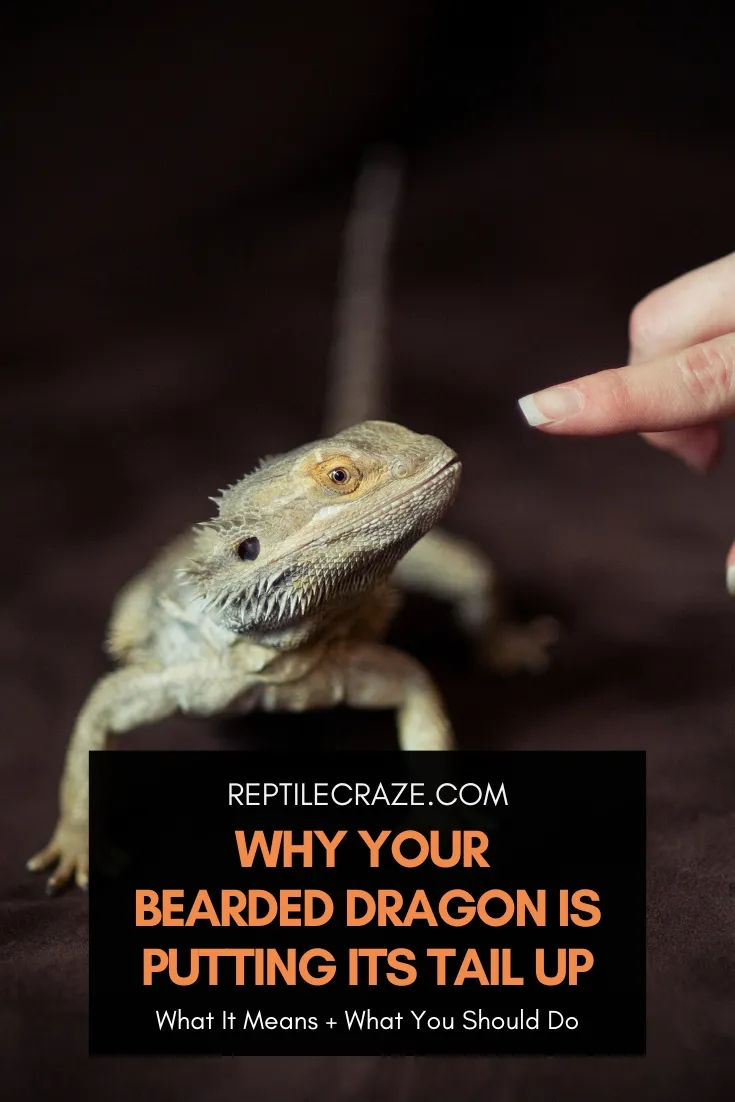
A query ranking high among the dragon community nowadays is – why is my bearded dragon’s tail up? If you’ve been wondering the same, your efforts have led you to the right place!
Bearded dragons point their tails up as a form of communication. Beardies with their tails up are generally excited, alert, or threatened. They can also raise their tails when they’re basking, soaking in the bath, or trying to assert dominance over other lizards.
If you need in-depth information about why your beardie chooses to lift its tail in the air all the time, we can help. This article will highlight why bearded dragons do that, when you should worry, and how to help your dragon!
Table of Contents
Why Do Bearded Dragons Stick Their Tails Up?
One of the reasons why beardies are fascinating is they rely on body language to communicate their feelings.
These physical cues are meant for humans and animals alike. Moreover, reading your reptile’s body language can alert you to certain red flags.
Below, we’ve compiled a list of possible causes for your bearded dragon putting its tail up. All you need to do is grow through each reason and single out the one you think corresponds to your pet’s behavior.
1. Excitement
Beardies will often lift up their tails when they’re feeling excited or thrilled. But dragon parents might have to do some digging to discover the cause of their pet’s good spirits. Here’s how.
Is Your Dragon in Exploration Mode?
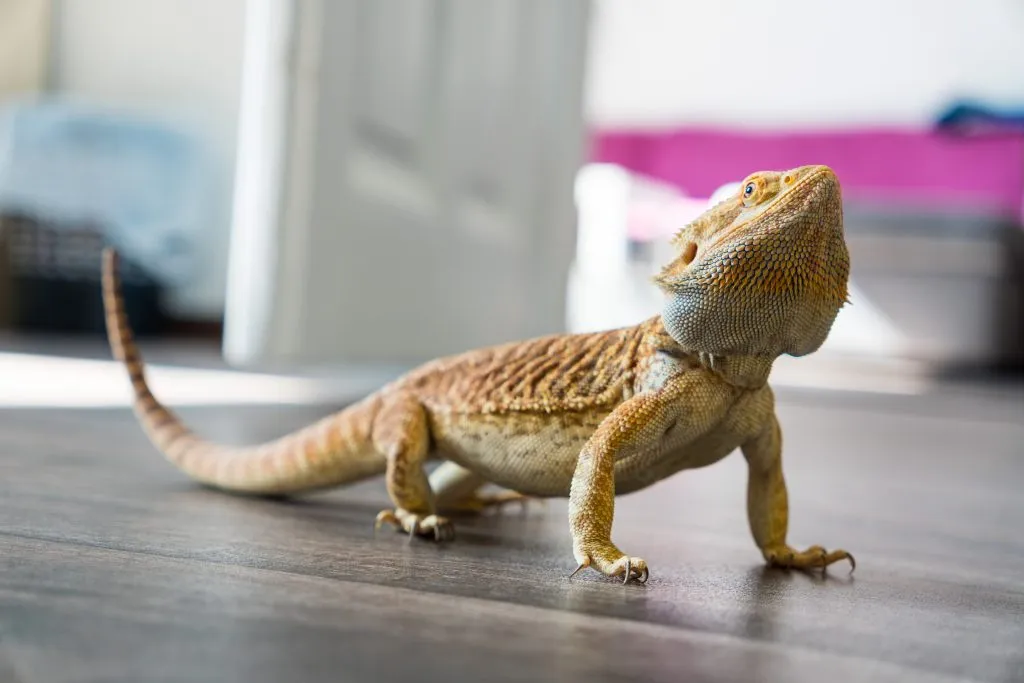
Bearded dragons are solitary creatures, but that doesn’t mean they’re boring. Dragon owners will agree that these reptiles are adept at keeping themselves entertained.
How? That’s simple. When your dragon isn’t cuddling with you, it’s basking or exploring its
That’s why almost all experts stress getting the
Not only will a small
You can generally tell your reptile is happy with its
On the flip side, if your dragon is unhappy with the
Is Your Dragon Hunting?
Bearded dragons do well in arid regions because they’re opportunistic hunters. They’re omnivores but like eating small invertebrates and insects in the wild.
That means they have a prey drive or an inherent instinct to hunt for
This drive to hunt doesn’t just disappear in captivity. In fact, one of the reasons why herpetologists recommend live feeders for the species is to keep them from getting bored.
In short, if you notice your dragon’s tail is up after you’ve provided it with a few tasty crickets or worms, it’s because your pet’s worked up and getting ready to hunt.
Is Your Dragon Waiting for Food ?
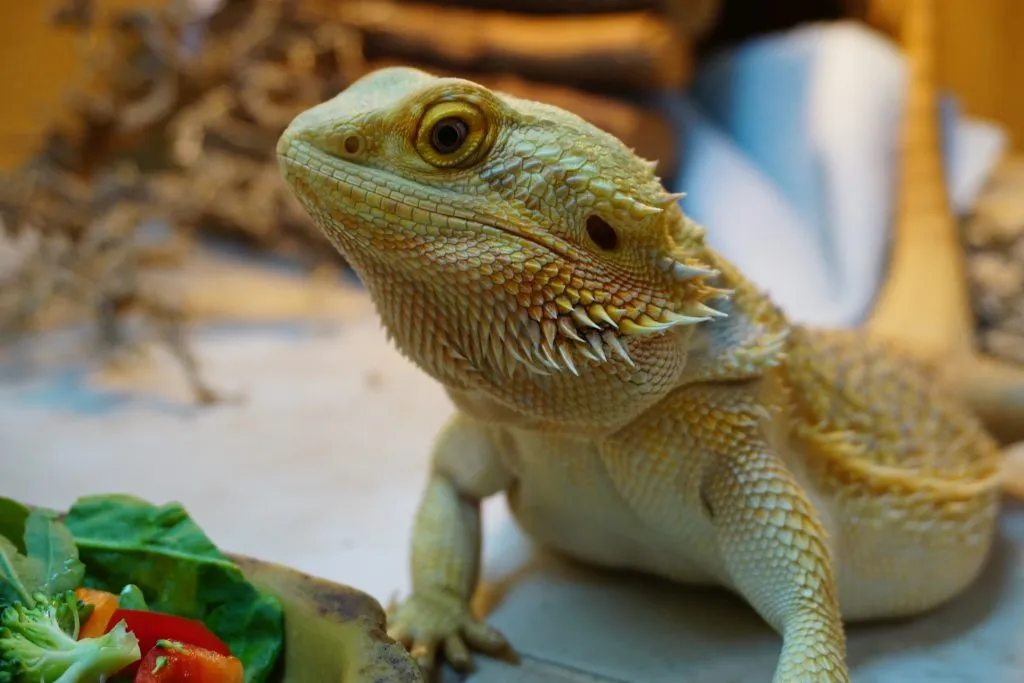
If you maintain your dragon’s feeding schedule like clockwork, it’s possible you’ll see some your bearded dragon curling up its tail slightly when chow time is near. That’s because your pet is hungry and excited about its next meal.
In the wild, when dragons are feeding, they’re open to attack from birds, dingoes, or snakes. If your dragon’s tail is up while eating, it lets you know it’s alert and aware of its surroundings.
So, your beardie sticking its tail up related to
2. Alertness
Being alert is generally described as being cautious of possible dangers. And that’s no different for beardies.
It’s pretty common to see a bearded dragon’s tail up when they’re watchful or vigilant. Here are some situations when you might notice your lizard’s tail up due to alertness.
Your Dragon Hasn’t Acclimated
Like all animals, bearded dragons take their time getting used to new surroundings. If you’ve recently bought your reptile home, you’ll see your reptile strutting around its
That’s simply your pet’s way of letting you know it’s aware of a change and is watching out for potential risks.
While it is not worrying if a new bearded dragon puts its tail up, it’s best to back away if your dragon starts hissing or puffing its beard when you move too close. Beardies puff up their beards and hiss to communicate aggression.
In the case of a newly bought dragon, these actions mean your pet still hasn’t acclimatized to its new home and needs time to settle down.
Dragons can take up to three or four months to familiarize themselves with new settings, and owners should give them space to do so.
It’s also a good idea to only try and handle the dragon when its tail isn’t raised, and it’s showing no other signs of aggression. Also, avoid making sudden moves to keep from startling your pet.
Your Dragon Is Reacting to Changes
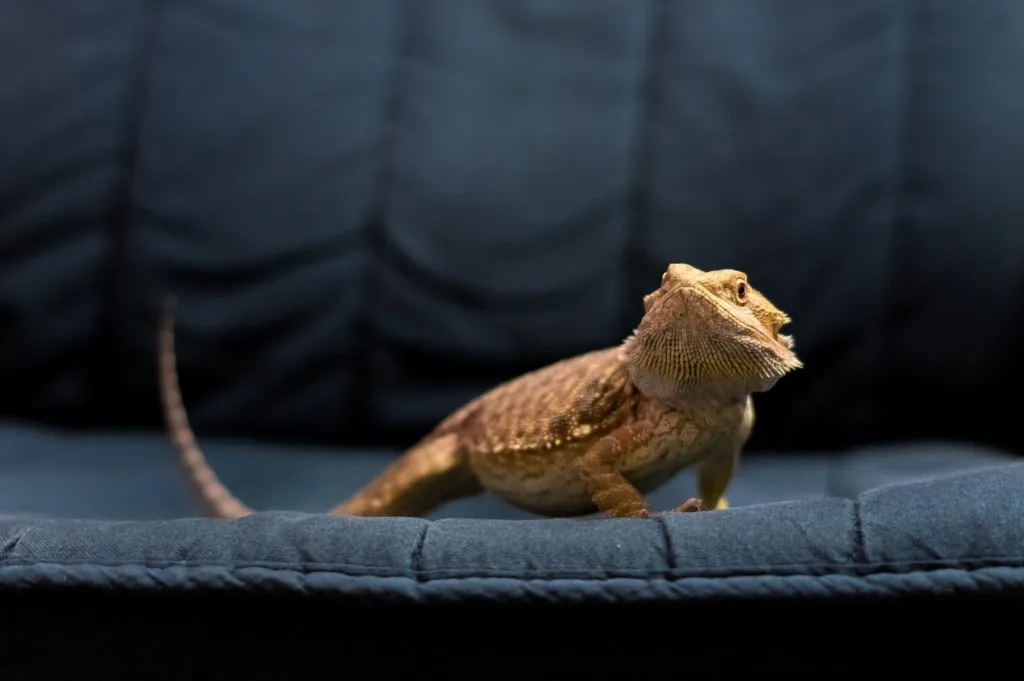
Bearded dragons are stressed pretty easily. Things like too much noise, fluctuating
Another prevalent cause of stress in the species is change. This includes changing the
If you’ve relocated your reptile’s enclosure or added some new decorations, you’re bound to see your pet act out.
Small changes might not result in anxiety, but they will make your dragon more vigilant of its environment. And that’s when you might see your beardie sticking its tail up.
If you’ve added or removed some decorations from the
However, if you notice stress signs such as beard puffing and head bobbing appear, along with a lifted tail, think about reverting to the original
Stressed dragons can often go off their
To prevent your pet reptile from suffering a meltdown due to changes in the terrarium, closely observe your dragon for a few days. If you suspect your pet isn’t happy with the new decor, fix the source of the anxiety.
Your Dragon Is Feeling Curious
Bearded dragons, especially the young ones, can startle very easily. But that doesn’t mean they’re entirely timid or indifferent. If you’re a first-time dragon parent, you might be surprised to learn your pet has an inquisitive side.
Beardies don’t just like exploring their
If you’ve observed your reptile’s tail going up as it gazes outside the
3. Threatened
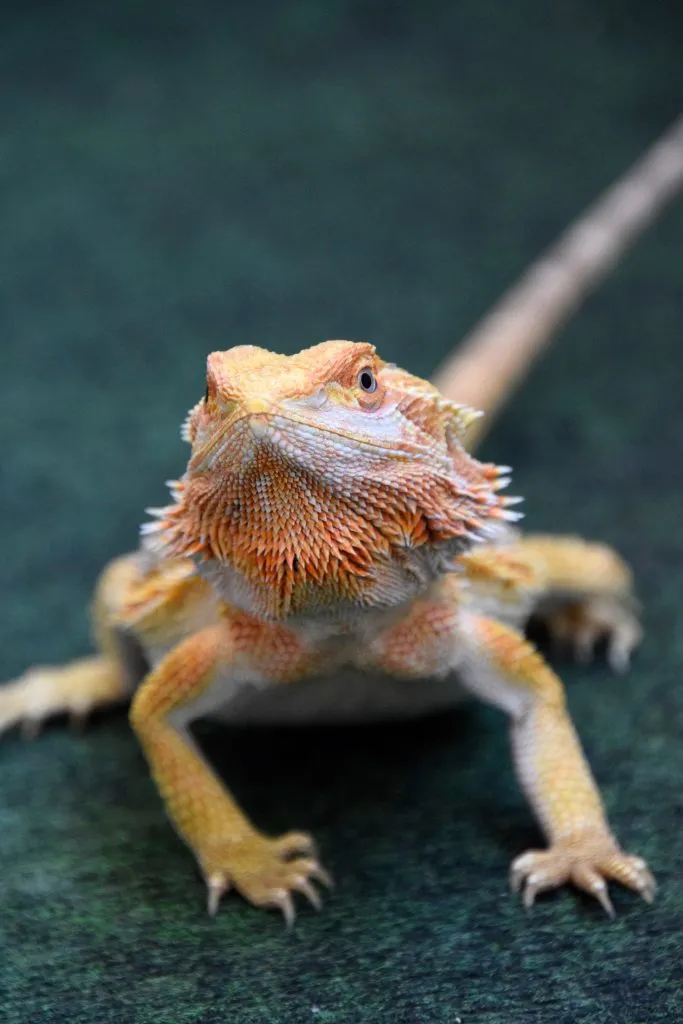
Lifting the tail in bearded dragons is associated with feeling threatened or in danger. This will generally happen when you’ve housed more than one dragon in an enclosure.
Beardies don’t need tank mates, especially males because they’re highly territorial.
You might be able to keep multiple dragons in a single
If you’ve recently introduced another inhabitant to your reptile’s
However, if the
These include hissing, tail lashing, head bobbing, and flared beard.
In such situations, it’s best to remove one of the inhabitants and get them a
4. Basking
Bearded dragons soaking up vitamin D3 under UVB lights can sometimes raise their tails. This isn’t something you should be concerned about, nor is it related to alertness.
Tip: If you would like to know what the best UVB lamps for beardies are, read our article on that here!
Instead, putting the tail up in the air during basking seems to be a reaction to warmth. Your dragon likely feels cozy and comfortable.
5. Bathing or Soaking
If you’ve caught some tail lifting action on your dragon’s part while bathing it, it’s reacting to the warm liquid. That means you haven’t hurt or irritated your reptile, and there’s no cause for alarm.
However, some dragons can lift their tails while soaking to keep them from getting wet. This type of behavior is more prevalent in juveniles rather than adults.
6. Dominance

Do you remember when we mentioned that dragons put up their tails when another lizard is nearby? Well, that behavior is partly linked to asserting dominance.
When dragons see something trying to enter their territory, they raise their tails to warn off the intruder.
However, it’s also possible for your dragon to put up its tail while completely alone in its terrarium. Generally, in such situations, dragon owners should look out for other pets straying too close to the enclosure.
Another plausible scenario is that your reptile is asserting dominance on its reflection.
You can keep this from happening by employing techniques to block the reflections. For example, adding background paper or plants can help minimize reflections.
Summing Up
While the vertical tail lift isn’t generally something reptile owners should be concerned about, it can be a warning sign.
That’s especially true when tail lifting is a precursor to problems like stress or aggression.
That’s why it’s always a good idea to spend ten to fifteen minutes observing your bearded dragon closely on a daily basis to be alert to any changes in its behavior.
- Enchi Ball Python: A Unique and Stunning Morph of Python regius - March 27, 2025
- Emerald Tree Monitor: The Enigmatic Green Guardian of the Rainforest - March 26, 2025
- The Egyptian Cobra (Naja haje): A Fascinating Serpent - March 25, 2025
